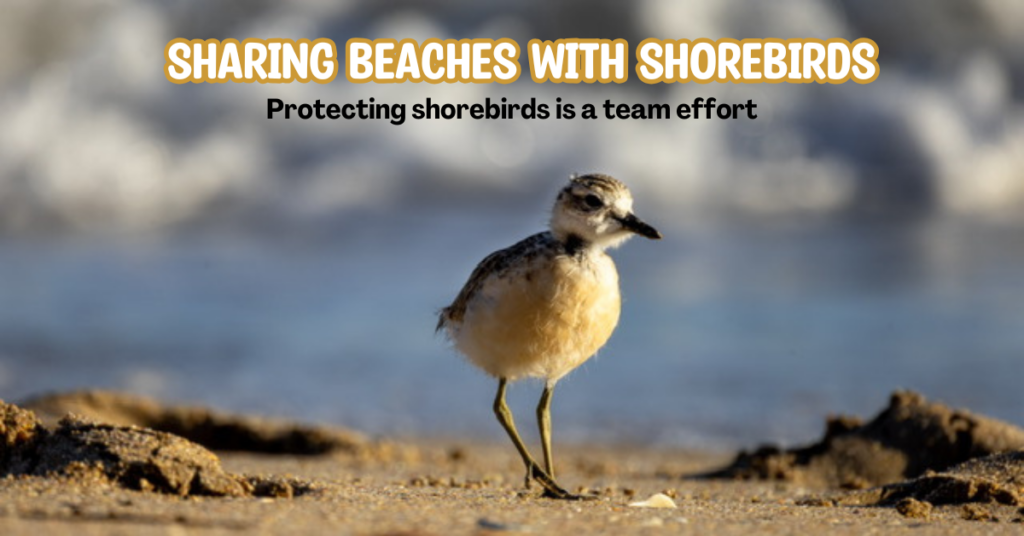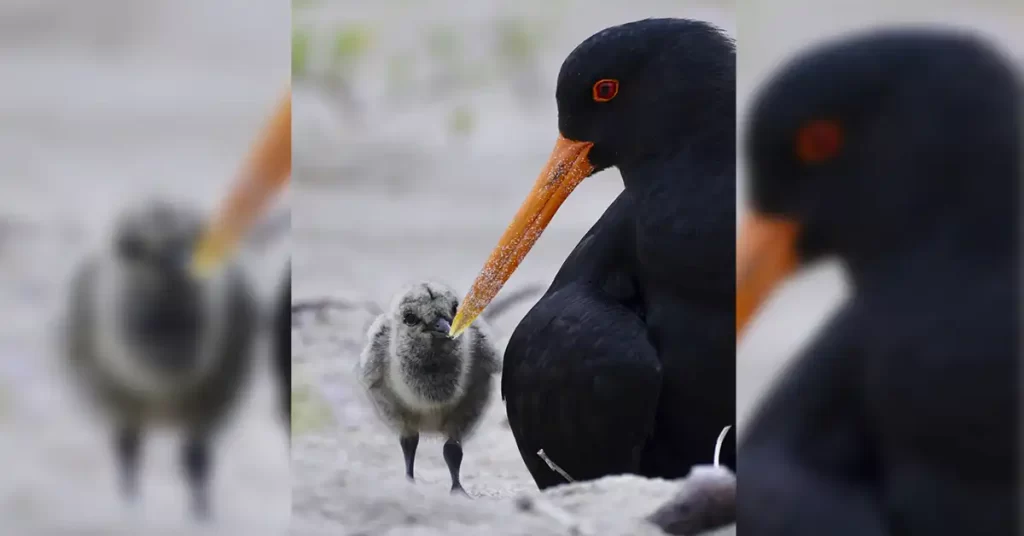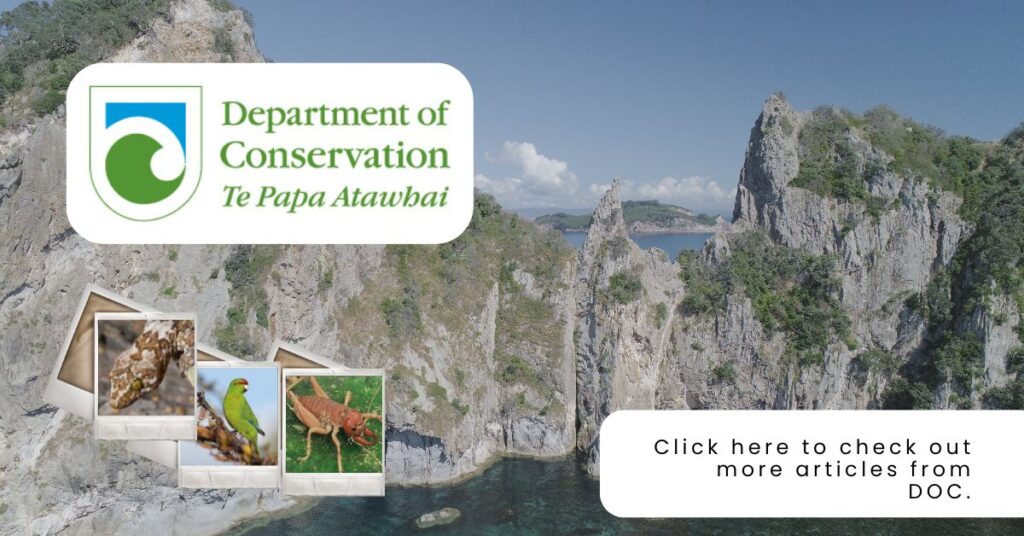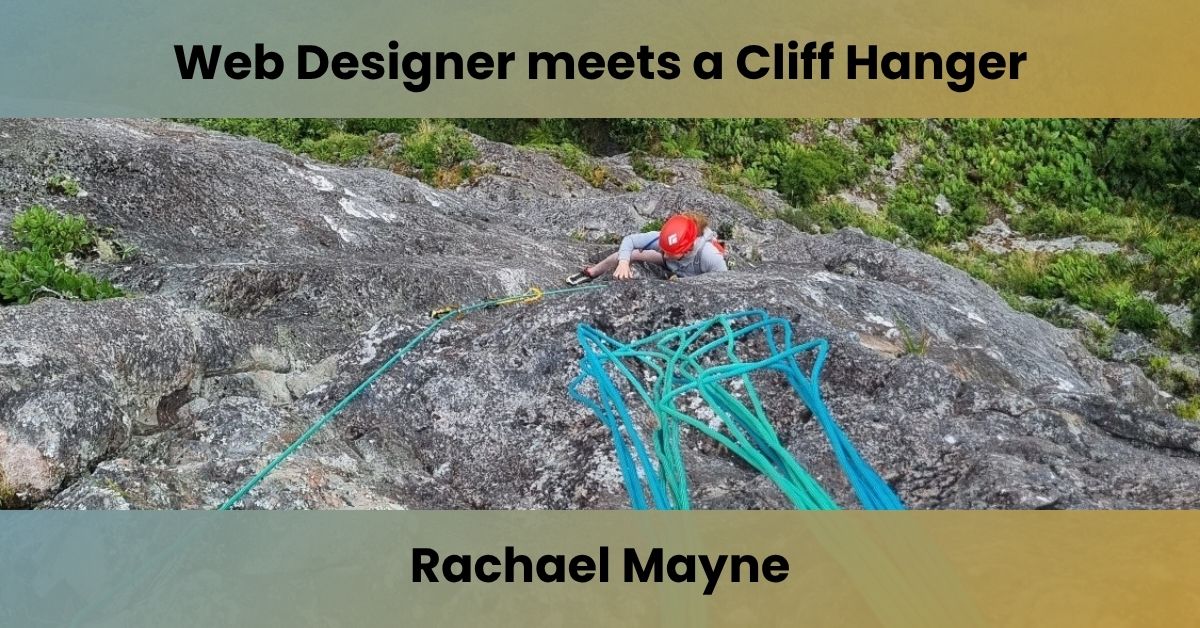
Protecting shorebirds is a team effort
The stunning sandy beaches of the Coromandel Peninsula are not just a playground for people; they are essential habitats for native shorebirds including tūturiwhatu / dotterel, tōrea pango / variable oystercatcher, tarāpunga / red-billed gulls, tarāpuka / black-billed gulls, and tara / terns.
These remarkable birds depend on our coastlines to breed and raise their young, yet they face constant threats from human activities, pets, introduced predators and storm surges.
DOC Ranger Frouk Miller says shorebirds nests are simple by design.

“Dotterel and oystercatcher nests are often just shallow depressions in the sand known as scrapes,” says Frouk.
The natural camouflage of pale, speckled eggs help nests blend to evade predators but makes them vulnerable to human disturbance. Eggs can be overlooked and crushed by beachgoers, dogs and vehicles.
To protect their young, shorebirds distract predators by feigning a broken wing, flapping or chirping loudly. If you see this, it means you are near a nest so it’s best to quietly move away.
Frequent disturbances can force birds to leave their nests, exposing eggs and chicks to extreme temperatures, predation or lack of food, which can lead to fatalities.
One of the best ways to protect shorebirds is by respecting nesting areas. Beachgoers should avoid fenced-off zones marked with signs indicating dotterel and oystercatcher nests.

“Giving them space reduces disturbance and greatly increases chick survival rates,” says Frouk. A reminder that chicks will not stay within fenced areas but will of necessity forage along the beach.
If not managed, cats and dogs pose a serious threat to shorebirds. Frouk says a lone cat can single-handedly wipe out multiple nests.
“Last year we saw a loss of 10 chicks when a member of the public lost her cat for 5 days during the peak of the breeding season. It’s devastating.”
It is essential to keep cats indoors or enclosed at night and ensure dogs are leashed and under control in coastal areas. Being aware of nesting sites at local beaches and following dog exercise rules is an important part of being a responsible dog owner.
Frouk has been overseeing the Coromandel Dotterel Minding programme for more than 10 years.

“We are fortunate to have a network of Dotterel Minders across the peninsula – dedicated volunteers who advocate for and protect nesting shorebirds, manage nesting sites, and keep the community informed,” says Frouk.

Alongside dedicated Dotterel Minders, there are many conservation groups that trap dunes for introduced predators, including Purangi Conservation Trust, Ōtama Reserves Group, Pest Free Tairua, Ōpoutere Ratepayers and Residents Association, Whangamatā Harbour Care, and Coastcare groups, to name a few.
Leanne Irvine, DOC Senior Community Ranger, says with only a few thousand individuals remaining in some shorebird species, every breeding season is precious.
“Supporting predator control efforts is crucial. We’re grateful to have many community groups actively trapping sand dunes to protect shorebirds.” says Leanne.
All our actions contribute to the protection of shorebirds and their breeding success.
Captions:
Images by Peter Drury, part-time local, long-time photographer in Cooks Beach
Dotterel Minders, like Alison Henry (Cooks Beach), protect nesting areas and update the community over the breeding season.

Coromind: Coromandel’s Collaborative Magazine

Help us take Coromind Magazine to new heights by becoming a member. Click here
Change the Weather for Your Business: Advertise with Us.
Advertise your business in the whole Hauraki Coromandel in the coolest Coromandel Art Magazine, from Waihi Beach/Paeroa /Thames up to the Great Barrier Island.
Advertise Smarter, Not Harder: Get in Touch






